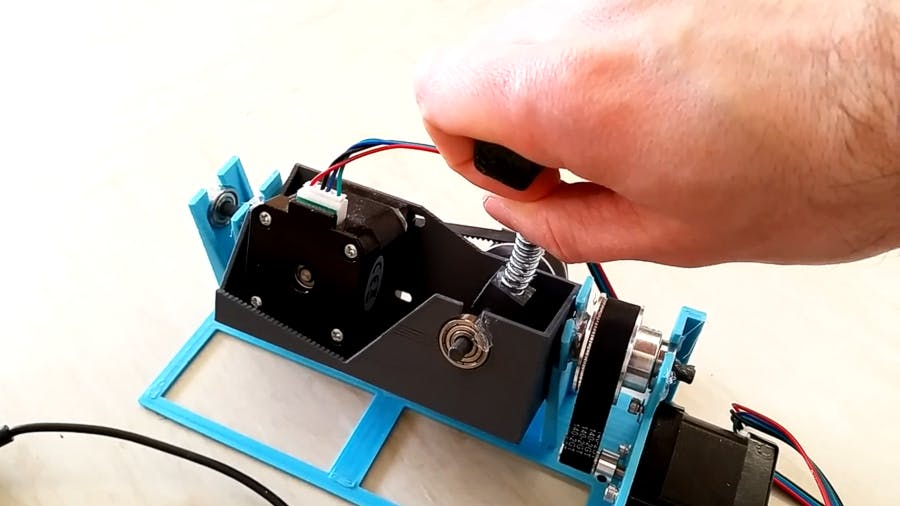
This "G-Force Player" Lets You Feel Accelerometer Recordings In-Time with a Journey's Video
from hackster.io
Pseudonymous maker "hndi" has put together an Espressif ESP8266-powered device designed to replay G-force data recording from a smartphone, allowing the user to feel motion as they watch a recorded video — complete with being pushed to the side during cornering.
"You can record acceleration data with every smartphone," hndi explains, "and I though that there should be a device that can play those recordings back and lets you feel the recorded acceleration. So I wrote a script that lets you play back the acceleration data and video/sound precisely timed — so you can feel the real life acceleration from cars, planes and so on while watching the video."
The original prototype of the G-Force Player used an Arduino Nano microcontroller board, later switched out for an Espressif ESP32 to provide improved performance. The controller drives two NEMA17 stepper motors with A4988 drivers, housed in a 3D-printed chassis with a spring-handled knob the user to hold — the spring preventing the stem from snapping if the user resists a surprise change in direction.
"The spring was almost the most important part in this build, and it has to be very stiff, otherwise it is just wobbly and provides almost no force you can feel," hndi explains. "Took some quite time to figure that out… The motors alone would be disappointing and either stall or break your hands.
The software is comprised of a Python server tool, which takes a custom "GF" file with details of the audio, video, and force recording to be played back and a recording of the accelerometer data in comma separated value (CSV) format — "I used and recommend the app 'phyphox' for recording," hndi says.
The Python script then transfers the data over the serial port to the ESP8266, running a simple script that accepts the data and translates it to the motors — allowing the user to feel ever acceleration, deceleration, twist, turn, and bump in-time with the video.
The project's source code has been released on GitHub under the reciprocal GNU General Public License 3; hdni has not yet made the 3D print files public. More information on the project is available on hndi's Reddit thread.



Leave a comment